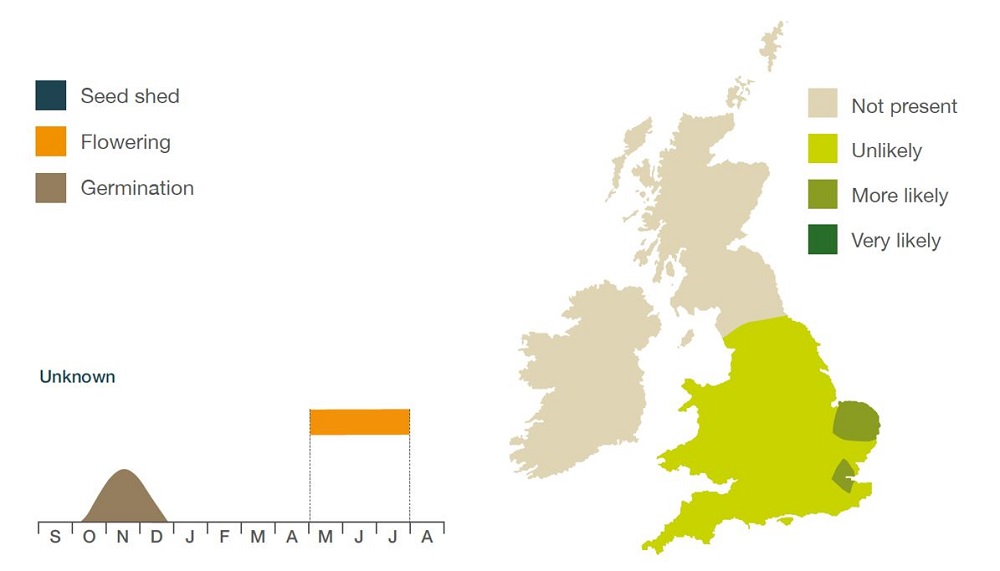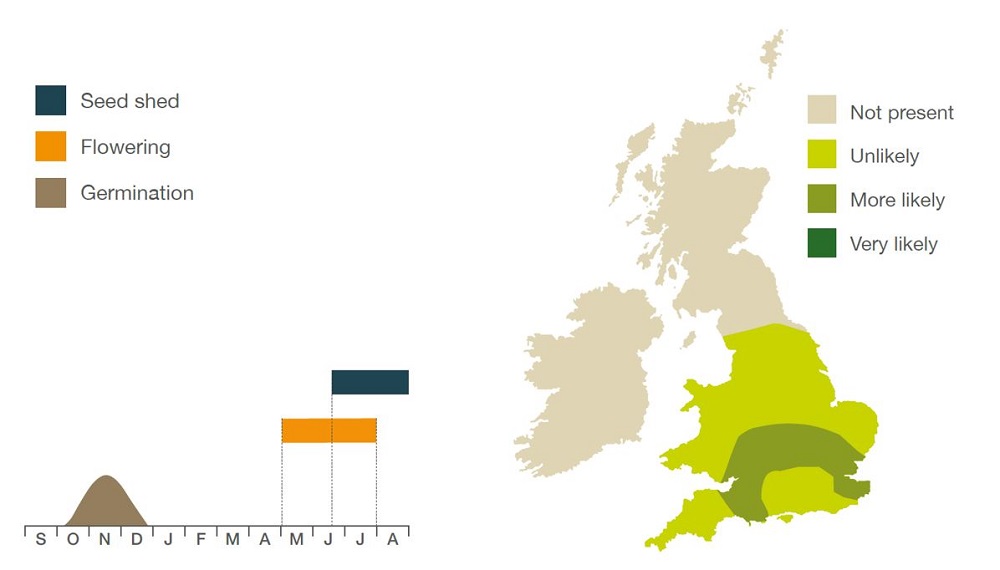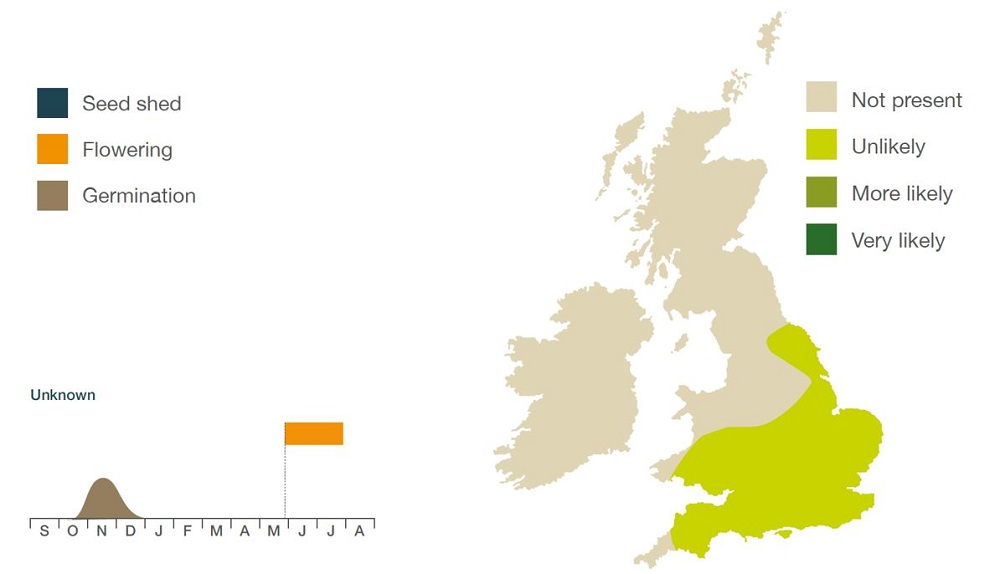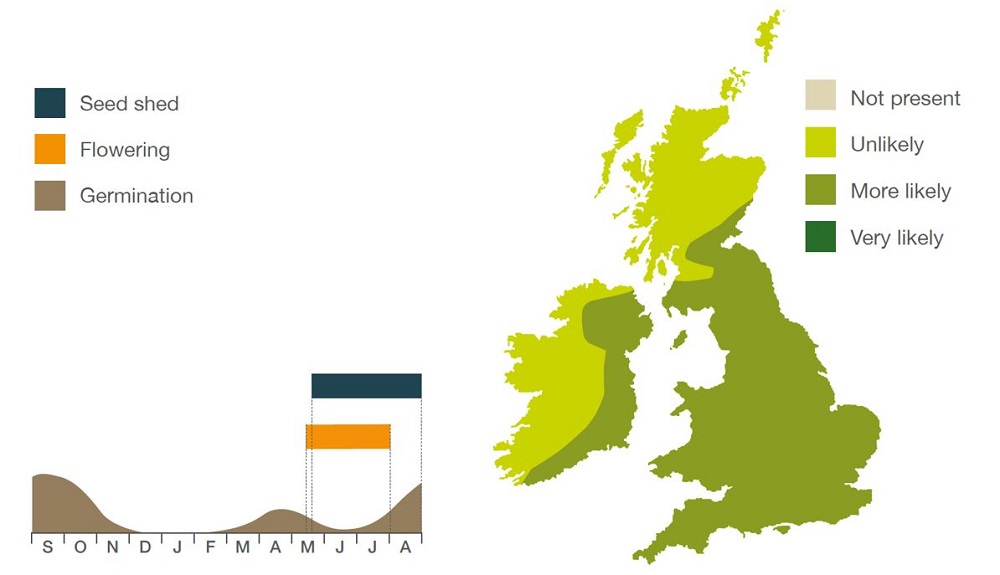- Home
- Knowledge library
- Where are brome weeds found in the UK?
Where are brome weeds found in the UK?
Successful management of brome grasses in cereal crops requires an understanding of the species present. Each species has a different UK distribution and a preferred soil type. Understanding these differences can help you assess the risks to your crops and guide species identification.
The biology and distribution of barren (sterile) brome
Found mainly in England and the arable areas of Scotland, barren brome is usually a lowland grass. However, it has been observed at altitudes greater than 350 metres. Its habitat includes verges, field headlands and waste ground. It prefers well-drained soils.
Most seeds germinate in autumn, with the weed overwintering with green leaves. However, some seeds germinate in the spring and flower the same year. Seed germination is inhibited by drought and by low temperatures after shedding. Seed burial can induce dormancy, which varies between populations but is lost rapidly.
Barren brome: seed statistics
- Seed longevity: 1–5 years
- Seed decline: 90% per year
- Seed germination depth: 5 cm
- Seed weight: 8.4 mg
- Seeds/flower: 1
- Seeds/plant: 200
 brome life cycle and distribution.JPG) AHDB
AHDB
The biology and distribution of great brome
Generally, great brome grows in the south and east of England, but has spread as far north as Southern Scotland. It is found in arable fields, waste ground and roadsides. It prefers sandy soils and dunes. Great brome has relatively short-lived seed and emerges in autumn.
Great brome: seed statistics
- Seed longevity: <1 year
- Seed weight: 10 mg
 AHDB
AHDB
The biology and distribution of meadow brome
Meadow brome is a lowland plant of Southern England, growing especially on cultivated land and in rough grassland, damp meadows, verges and track edges. It is most frequently found on moist, relatively heavy soils.
This brome species commonly infests headlands of winter cereal crops. It is rarely seen in spring-sown crops. It completes its life cycle within one year and does not reproduce from vegetative fragments.
Meadow brome: seed statistics
-
Seed weight: 5 mg
 AHDB
AHDB
The biology and distribution of rye brome
Rye brome is a lowland weed, found in cereal fields (especially headlands of winter crops), waste ground and some improved leys. It is usually found in areas with average soil moisture and reasonable (but not high) nitrogen levels, with a preferred pH of about 5. It propagates only by seed and can be found in large patches.
It was once widely grown as a grain crop and was probably introduced as a contaminant of cereal seeds. Then it was a common weed, often dominating fields of wheat. With improved methods of cereal grain cleaning, it is now uncommon or rare.
Rye brome: seed statistics
- Seed longevity: <1 year
- Seed weight: 3.33 mg
- Seeds/plant: 10–100
 AHDB
AHDB
The biology and distribution of soft brome
Soft brome prefers disturbed, damp and grassy habitats, but is not found in waterlogged ground. It usually grows at altitudes of up to 400 m. It prefers neutral to alkaline soils (pH >5).
The weed is found in grass and arable crops (especially field margins). It is often a contaminant in rye and fescue seeds. Seeds germinate rapidly in autumn and young plants can grow rapidly in cooler months. Plants may remain green over winter. Vegetative growth occurs in autumn and spring.
Soft brome: seed statistics
- Seed weight: 5 mg
- Seeds/head: 100
 AHDB
AHDB
When was this information last updated?
This page is based on content from the encyclopaedia of arable weeds publication. Since it was first released in 2008, the publication has been redesigned several times but not revised. However, it remains a good foundation for general information on the distribution and biology of weeds.

